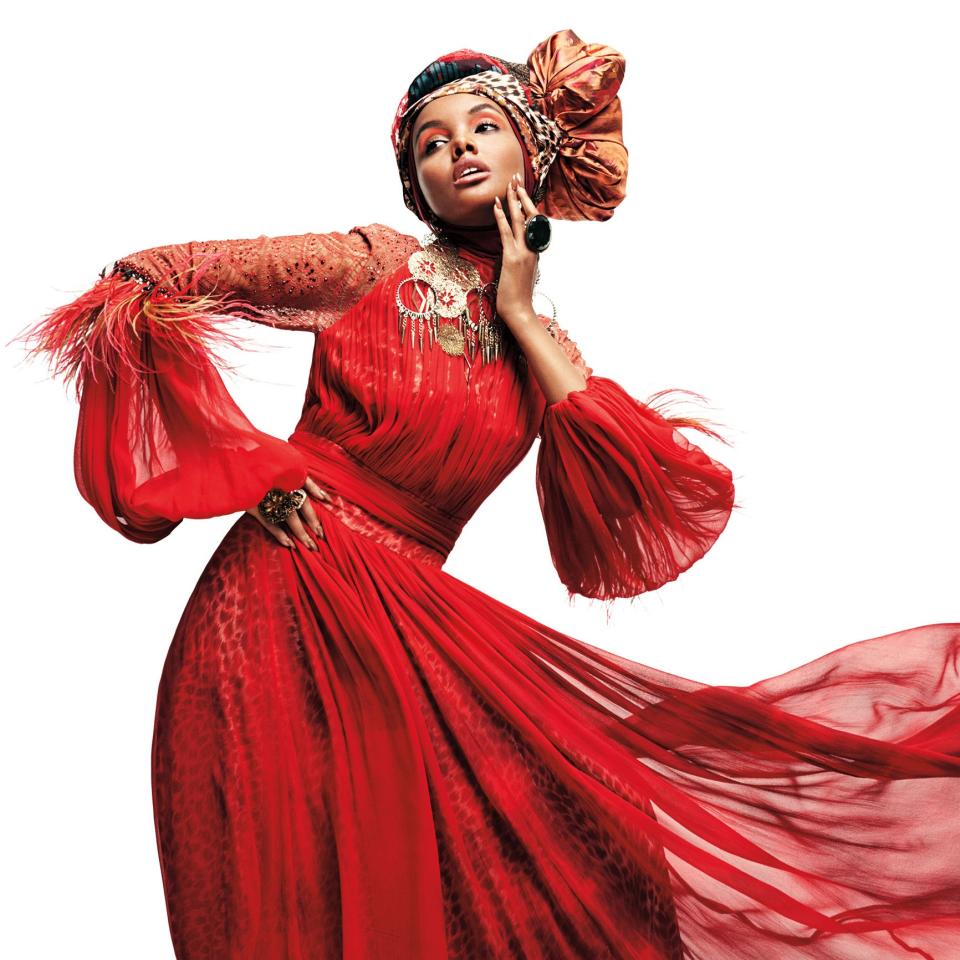Modesty Makes Its Mark in “Contemporary Muslim Fashions” at the de Young Museum
Modesty Makes Its Mark in “Contemporary Muslim Fashions” at the de Young Museum
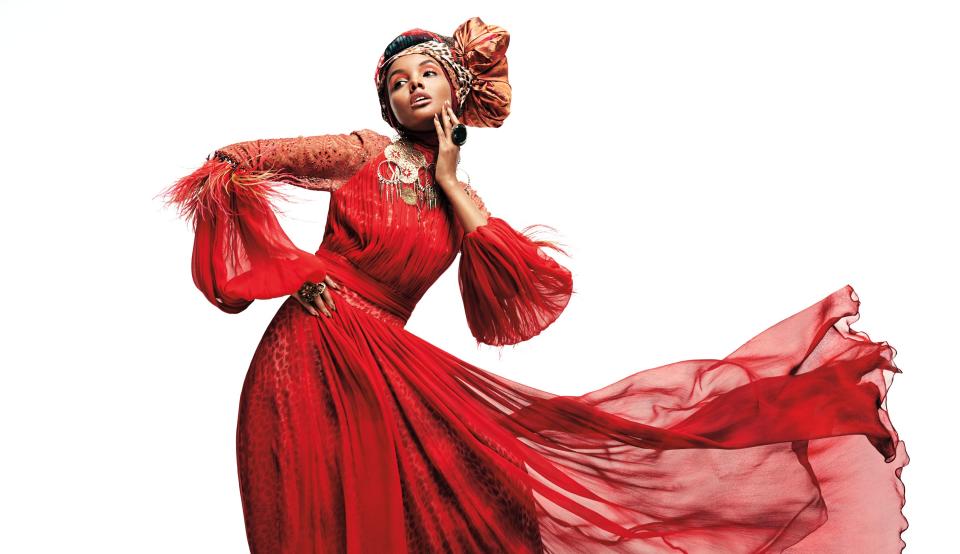
“Contemporary Muslim Fashions”
Ensemble: Turban, earrings, rings, tie-dyed-effect long dress with gathers on front body, and heels. Sunset in Africa Collection, 2012.
Silk chiffon with tie-dyed finishing, silk satin lining, feathers, semi-precious stones, and Swarovski embellishments.
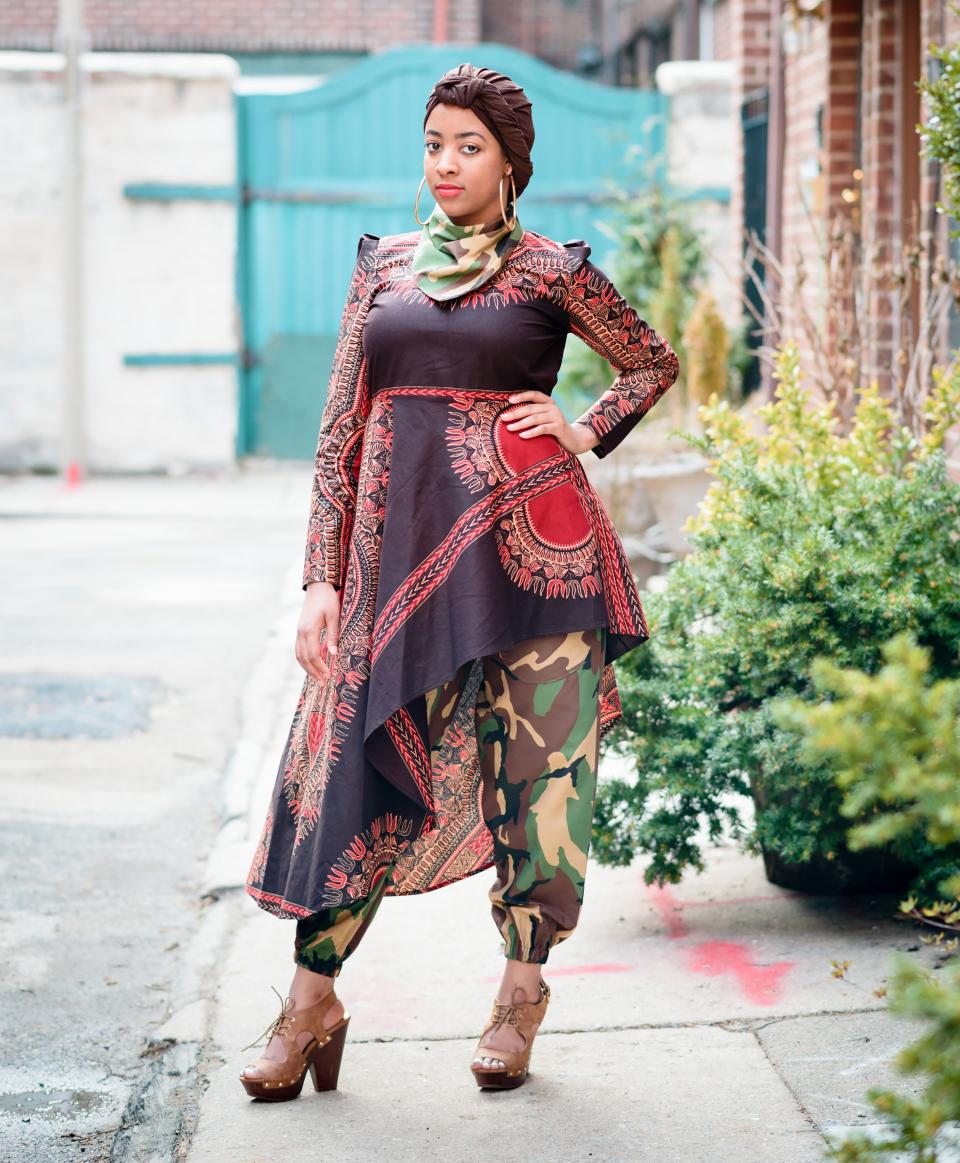
“Contemporary Muslim Fashions”
Ensemble: Asymmetric tunic, gathered ankle.
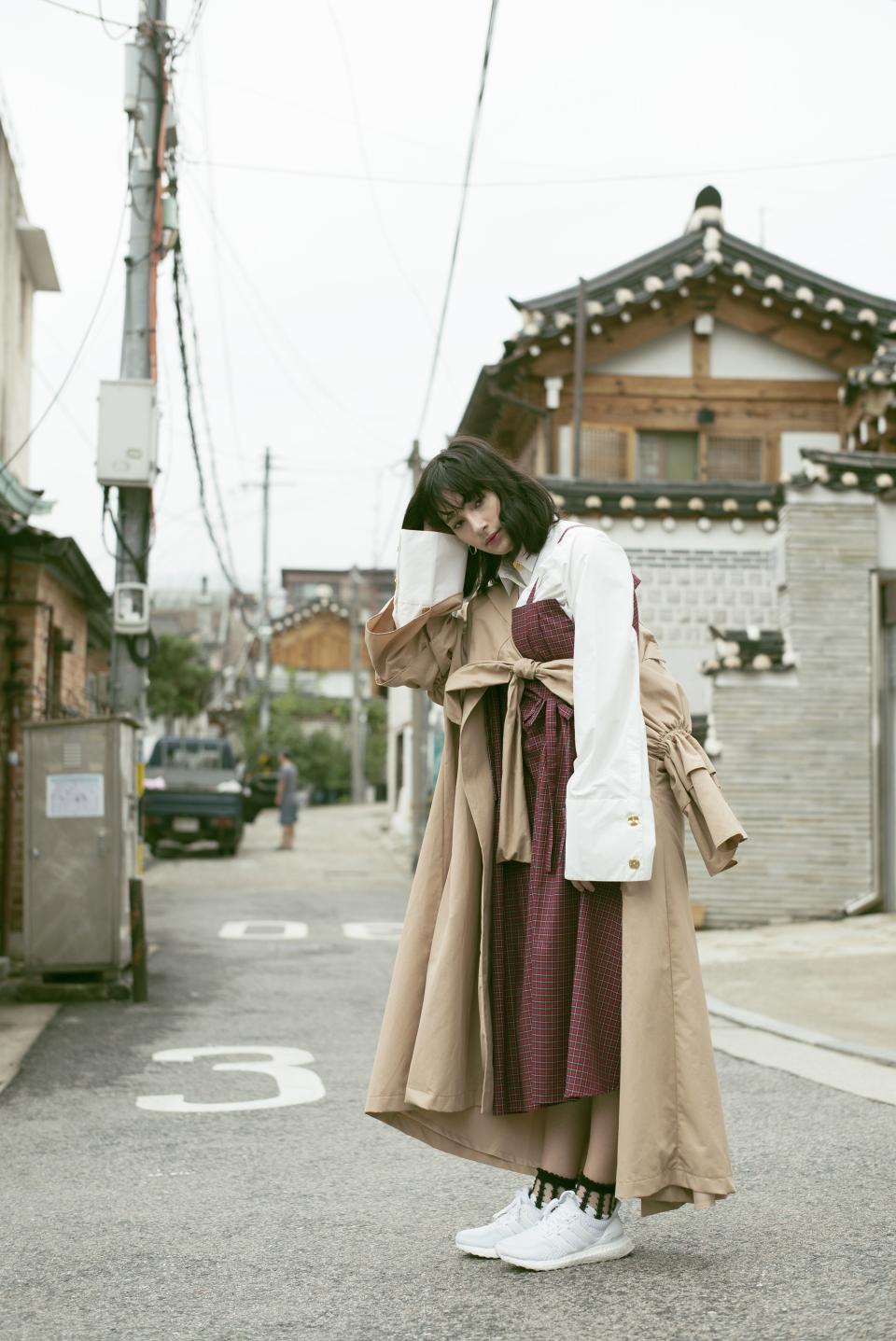
“Contemporary Muslim Fashions”
Ensemble: Jacket, blouse, pants, and shoes, 2017.
Cotton twill weave.
“Contemporary Muslim Fashions”
“Contemporary Muslim Fashions”
Ensemble: Maxi dress, turtleneck, inner head scarf, and scarves, Co-Identity Collection, Jakarta Fashion Week 2016.
Cotton drill and crepe with fringe appliqué, spandex knit with beading, Thai silk, wax-resistant dyed (batik) Thai silk.
“Contemporary Muslim Fashions”
Ensemble: Cap, Head scarf, Top, Jacket, Skirt, and Pants, 2017.
Thai silk, batik Thai silk with songket (supplementary-weft patterning), striped silk (Tenun Salur), wood beaded appliqué.
“Contemporary Muslim Fashions”
Silk, polyester.
“Contemporary Muslim Fashions”
Silk, silk-and-polyester blend; silk lining.
Isabell Andreeva (Premier) in a Peter Pilotto shirt and skirt, December 2017.
Silk-and-viscose blend; silk lining.
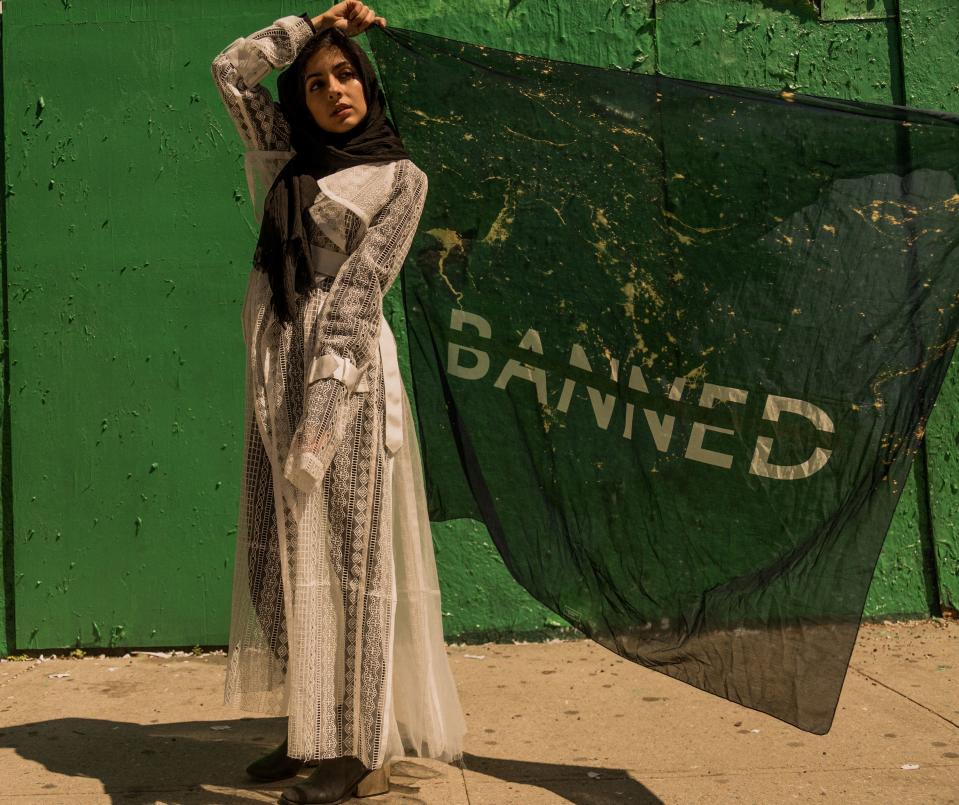
“Contemporary Muslim Fashions”
Model: Hoda Katebi; Make Up Artist: Grace Ahn; Stylist: Solange Franklin; Creative Director: Céline Semaan, Slowfactory
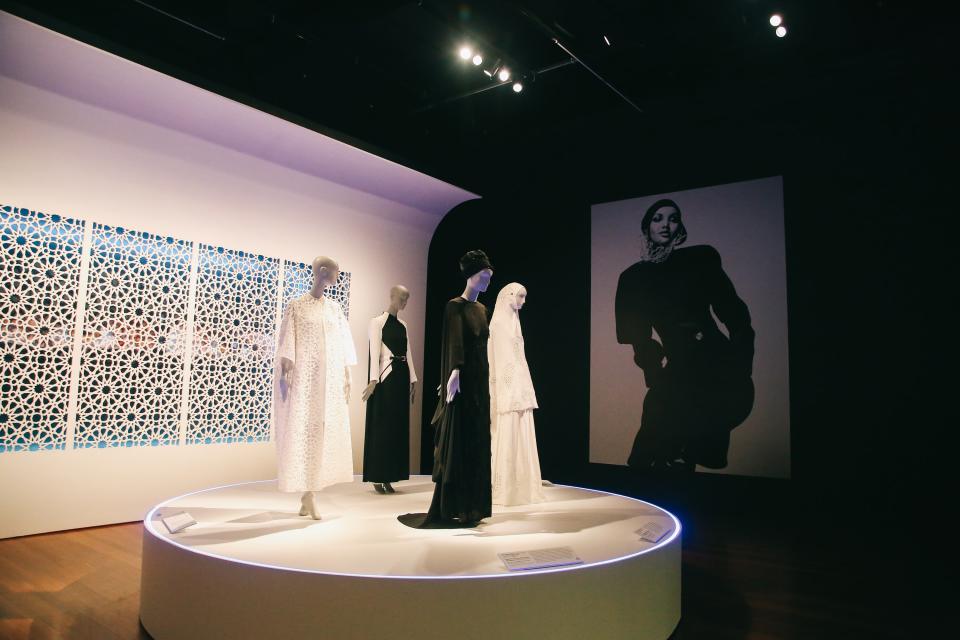
“Contemporary Muslim Fashions”
“Contemporary Muslim Fashions”
“Contemporary Muslim Fashions”
“Contemporary Muslim Fashions”
“Contemporary Muslim Fashions”, opening at the de Young Museum in San Francisco this weekend, is a fitting companion to “Heavenly Bodies: Fashion and the Catholic Imagination,” currently on view at the Metropolitan Museum of Art in New York. Both exhibitions consider the relationship between ancient multicultural faiths and the contemporary world, and showcase objects that have universal appeal. But whereas casual references to parochial school uniforms—and terms like Popemobile—demonstrate how Catholicism has seeped into secularized (Western) pop culture, Muslim culture and dress have often been seen as something exotic and other, even though, as cocurator Laura Camerlengo reminds us, “it’s not necessarily an East versus West thing: Islam is a global religion.”
Part of Camerlengo and curator in charge Jill D’Alessandro’s remit was to demystify Muslim dress, which has often been under- or misrepresented. This is not a show about restrictive garments like the burka; it’s one that celebrates the creativity and diversity of modest dressing, a significant market that the larger fashion industry is finally waking up to. Camerlengo notes that this is in large part thanks to the way millennial Muslim women are using social media, particularly Instagram, as an agent of change and representation. In this age of oversharing and #MeToo, it’s not only pious women, says D’Alessandro, who are wanting “to empower themselves in a way that isn’t about their sexuality.” That’s certainly the takeaway from the runway success of the farsighted retailer Ghizlan Guenez, who launched The Modist, a niche website designed to cater to professional Muslim women, only to discover that her customer base was evenly split between believers and nonbelievers.
The New York Times dubbed 2017 the year of modest dressing, but the appeal of covered fashions is nothing new. D’Alessandro recalls finding photos of the couturiers Charles James and Cristóbal Balenciaga hanging out in the Dubai studio of Haal Inc. designer Mariam Bin Mahfouz, who spoke to the curator about “leaning into this whole lineage of modest dressing.” Bin Mahfouz cited Balenciaga, who worked symbols from his Catholic faith into his work, as a role model. Less translatable, the curators discovered, was the “phenomenon of the museum fashion exhibition.” Many designers initially thought they were being invited to participate in a runway show.
Visitors to “Contemporary Muslim Fashions” will be introduced to fashions and designers from the Middle East and Southeast Asia (D’Alessandro reports there are exciting fashion scenes in Malaysia and Indonesia, where many designers are taking inspiration from traditional Korean dress), presented in a set designed by the New York–based Iranian sisters behind the architectural firm of Hariri & Hariri. The show has a section dedicated to street- and sportswear (think: the Nike Pro Hijab) and another about diaspora designers. The final room displays the work of Western designers catering to a Muslim clientele. Covering, which not all Muslim women choose to do, as well as issues of gender, identity, and women’s roles are addressed through fashion, art, and documentary photography.
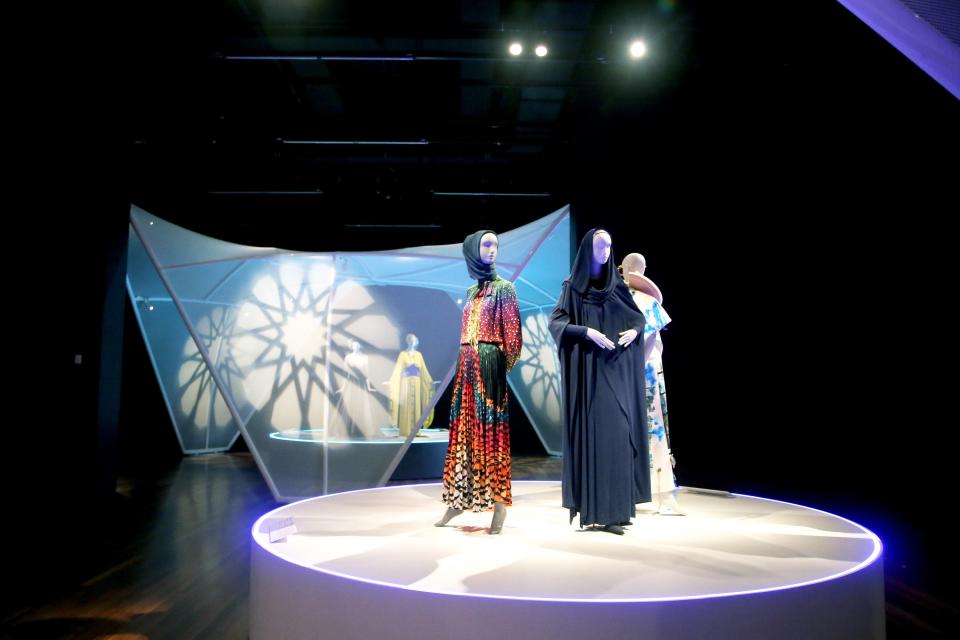
Though there are elements of modest dress that are dictated “not just by style, but by piety,” D’Alessandro sees a blurring of lines aesthetically, which has the potential to give this market legs. Just as brands like Oscar de la Renta have offered collections specific to Ramadan, many of the emerging designers featured in the show are also hoping to develop a cross-cultural client base. “They are looking for a commonality,” explains the curator. “Fashion can be an agent for positive change, for understanding, and breaking down barriers; they want to exhibit in the United States and in Europe because they want their cultures to be understood.” “Contemporary Muslim Fashions” should help that process along.
Read More Stories on Vogue Runway:
Goodbye, Mom Jeans! This Is the New Denim Trend of 2018—Read More
Phil Oh’s Best Street Style Photos From the Fall ’18 Paris Haute Couture Shows—Read More
Christian Dior Fall 2018 Couture Collection—Read More
Valentino Fall 2018 Couture Collection—Read More
Chanel Fall 2018 Couture Paris Collection—Read More
